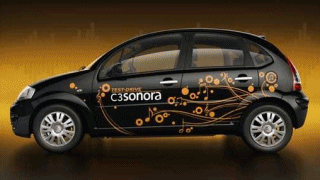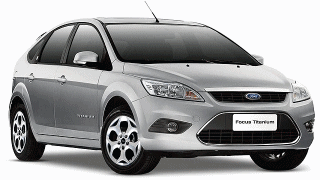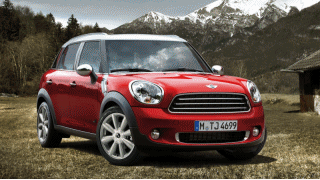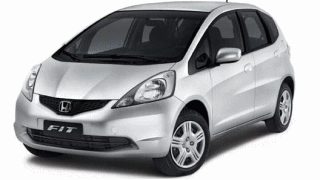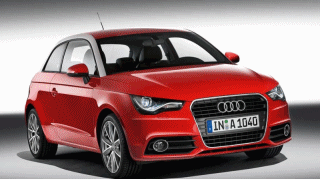Download Some thoughts about the growing US/China rivalry photo. Find Some thoughts about the growing US/China rivalry images.
Wallpaper Some thoughts about the growing US/China rivalry
As President Hu Jintao visits USA this week, I have seen a wave of articles about China vs US. They often try to explore the following the following subjects:
1) Has China surpassed USA?
2) China's unfair trade policies and currency manipulation.
3) China may seem impressive on the outside, but the communist system is hiding a lot of brewing problems.
4) What should US do about the growing PLA?
5) Is a crash imminent in China?
I will start by looking at China's current economic situation and social stability. I think that will answer what US should do about the growing Chinese military and has China surpassed US. At the current time, there are often two extremes when people look at China. The first extreme is created by look at China's impressive new infrastructure, clean energy initiatives, trade surplus and foreign exchange reserves. When you just focus of these, it will be easy to think that China has surpassed US in certain areas (especially economical strength). In the sphere of military, one can be easily impressed with PLA with the news about J-20, DF-21D and aircraft carrier programs. The other extreme is created by looking at the some substandard exports (lead paint for example), cheap knockoff products, piracy and "communist" system. In the sphere of military, one can dismiss China when looking at hundreds of J-7 fighter jets, Jianghu frigates and T-59/69 tanks that still form large parts of PLA.
We've read for the past few years that China is not playing by the rules in its current trade relationship with US and that it is doing so by keeping its currency artificially low. I do agree that China is manipulating its currency right now, but I also don't know if it's really that undervalued. When China first fixed its currency to 8.28 against USD, it was doing so achieve currency stability at a time when all major Asian currencies were dropping in value against USD in the midst of a major economic crisis in 1997-1998. It kept its currency fixed against USD until 2006 to achieve this currency stability while USD was dropping like a rock. China has since then moved between semi-floating and fixing RMB. But is RMB really kept below it's value? If we go by the amount of credit that BOC has injected in the economy and the resulting inflation rate in the past 3 years, it would be hard to argue it is. If we compare pricing of comparable items like gas, non-processed food, household items and such, they are about the same price in China after the conversion. For luxury items like high end cars, brand name beauty products and high quality alcoholic beverages, they are actually more expensive in China even after conversion. In fact, RMB has been loosing so much purchasing power recently that people having started speculate on commodity prices by buying precious metals and copper. The argument has always been that if RMB goes up, Chinese people would have money to buy more stuff from the west and that the credit injection is caused by China's desire to keep RMB low. I think even the Chinese gov't cannot manipulate the market forces in the long run. If inflation goes up, then factory workers' wages will be forced to move up even more, which would eliminate currency fixing effects. On the other hand, Chinese workers would still be making significantly lower wages than American workers even after a 20 to 30% move up. In the industries where China is competing against other low cost nations, it is unlikely that increasing conversion rate would move those jobs back to America. In the most high tech industries, Chinese products would still be quite a bit cheaper than Western ones even after increasing conversion rate. Basically, as long as Chinese companies can reach the quality/safety standard for that product class, they will most likely be the cheapest even after a 20% to 30% move up for RMB. So I think even if China did loose its capital controls and let its currency float, the effect probably will not work out the way that the politicians think they would.
However, I do think there are measures that China can take which would help balance trade between the 2 countries. First of all, China would need to take intellectual property right more seriously in the software industry (primarily in terms of software piracy). This measure would not only help American companies like Microsoft, but also help China's aspiring domestic software firms. Secondly, US and China should work on a more stringent quality control framework for exports into America. This measure would prevent substandard product like toys with lead paint from coming into America and also improve the reputation of Chinese products. Thirdly, China needs to allow greater access for American companies bidding for hi-tech projects in China. Western countries have also had this problem with Japan and South Korea, where market access are not equal on the two sides of trade. There really is no reason that Western companies that have part of their production in China should not have equal access to those projects. Fourth, I think many of the complaints from GE and other hi-tech exporters would be soothed if a framework can be worked out to prevent local Chinese companies from blatantly copying designs and claim them as their own. Part of the framework should also prevent Chinese government from enforcing caps like 70% of wind power must be produced locally. Having such an accord would reduce trade tension and possibility of trade war, which would help nobody. Fifth, I think China should provide greater access of its domestic food market to American farmers. China has shielded its farmers from international competition due to its fear over domestic unrest from this group. However, such measures have only stoked a lot of inflation in food prices for ordinary Chinese citizens. So, allowing more competitively priced international farming produce in the country would reduce inflation and public outcry over rising food prices.
The topic of inflation and public outcry bring us to the question of whether or not crash is imminent in China. The topic of China sometimes refer to the potential problems in the Chinese economy, while other times refer to social problems facing China. They are some what related to each other. It's often been said that the Chinese government has made an implicit pact with Chinese people where they get to control government the way they would like as long as they can continue to deliver increased prosperity. In particular, Chinese government caters to the demands of big business, banks, the wealthy and the growing middle class. This broad group has gained the most from China's existing social system and would generally be the most opposed to changes in governance (become a democracy for example) that would create instability and give more voice to the rest of the population. To get an idea of the social problems that simmers under the surface in China, one would only have to go to the city hall of any municipality. You would see a bunch of policemen standing outside the city with no apparent task to do. They are there to stop demonstrations by people that lost out as part of China's move from socialism to capitalism. Back in the socialist days, city dwellers can keep their job regardless of how productive their enterprise may be and receive welfare for life. As part of the move to capitalism, a lot of state owned enterprises were allowed to collapse in the face of competition from far more efficient private companies in the late 90s. As part of this shift toward private enterprises, there was a huge migration of jobs from the less efficient central part of the country to the export driven coastal provinces. With less job around, some people were able to adjust to this new working environment, but a lot of people were forced into early retirement while others were laid off. So now, all of the local government have the headache of dealing with angry people from loosing their jobs, health care and cheap housing. In order to alleviate all of these angry and unemployed people, they launch infrastructure projects (many wasteful) and created a lot of low tax business zone to attract investment. Sometimes these things work out, while other times they are stuck with a lot of debts, but they always end up taking land away from some unfortunate souls. China gets over 50,000 protests every year for reasons like unfair compensation for seizure of land, job loss and environmental damage. Even among most of population whose living standards have really improved in the past 30 years, there are growing resentment toward the wealthy and the connected.
Another source of growing discontentment is the shifting dynamics of the young people. I have read many articles talking about labour shortage problems in China. I don't believe there is a labour shortage problem, but rather a shortage in cheap labour. A large portion of the young people coming into the work force nowadays are the only child of their family and carry the hopes of doing better than their parents. Unlike their parents' generation, they are not willing to sweat out low paying blue collar jobs after getting college degree. As a result, a large portion of new college graduates are having trouble finding jobs while sweatshops and factories are having to constantly raise salaries due to the decline in migrant workers. As we move forward, these factories would have to raise compensation and improve work condition to attract the college grad and keep the migrant workers from going home. We are already seeing this happening in the past couple of years in big companies like FoxConn and Toyota and also in most of the low cost export factories in Guangdong. At the same time, Chinese companies have been retiring people from work force in the early 40s due to the influx of cheap young labour. As the number of young labours entering work force decline, these factories would also be forced to retire the better compensated older workers at later age. These are all factors that I think will prevent labour shortage, but will also drive up the cost of labour. Such natural economic forces will increase the cost of Chinese products in ways that no forced currency revaluation could. They will also force China to move up the value chain and face off against higher valued export nations like Japan, South Korea, Germany and Singapore.
So in short, I do believe there are a lot of social problems simmering under the surface in China. With all these potential social problems, is China also facing huge economic problems? I think the answer is yes and no. On the negative side, there is a huge real estate bubble in big Chinese cities across the country as a result of huge expansion in credit in the past 2 years. In order to stave off a short term economic decline in 2008, China ended up inflating larger bubbles across the country. A lot of speculative money went into new building in Beijing, Shanghai, Shenzhen and Chongqing. Even less developed inland cities were affected, although to a smaller degree. It's often said that a large portion of new homes are bought but vacant, because the buyer is waiting for the housing prices to go up. The housing prices are at such high level now that ordinary families simply cannot afford to buy homes. This housing bubble is no different than the ones that already burst in Ireland, Spain and Portugal or the ones that are forming in Australia and Canada. Another problem that I see is the excessive infrastructure projects by local governments funded by banks' cheap lending. As an example of wasteful spending, my hometown in China has built a city wall and a moat to try to transform itself into an historical tourist city (I'm not kidding here). Since a large number of these infrastructure projects are wasteful, the Chinese banks, who are implicitly backed by the gov't, will have to absorb the losses. These problems are similar to what has already surfaced in Iceland and Ireland and about to surface I think that once the housing bubble burst and debts problems from infrastructure projects surface, it will cause for some hard times for the Chinese economy. Unlike the PIIGS countries in Europe, the fundamentals in the Chinese economy is still very good. Even if the real estate sector and infrastructure suffer a slowdown, they still have enough productive industries around the country to keep lower level of growth. At the same time, the Chinese private sector also have very high level of savings, which creates enough capital for small businesses and new start-ups. While the public debts situation will become a problem when the government has to bail out banks, they do have enough currency reserves to deal with these losses. Most importantly, China does not have the same level of unfunded liability of public sector workers that Western countries have to deal with. For example, the current unfunded liabilities in America is greater than the total asset values of everything that America owns. This situation is well reflected in the 2 countries' fiscal deficit. While the American federal gov't has hovered around 10% in the past 2 years and many state gov't are swimming in debts, Chinese deficit has been 2.8% and 1.6% in the past 2 years after budget surplus in 2008. So when we factor in the public and private sector saving/debts, I think China is one of the few major economies that can survive the sovereign debts crisis. It will experience some pain once the credit bubble burst as part of the boom/bust cycle, but it will get out of this global economic downturn better than most countries. After all, America became the largest and most wealthy nation despite going through many downturns in the past 2 centuries.
As a whole, I think the Chinese economy is not as rosy as some economists think. I share the prognosis of economist like Andy Xie, Marc Faber and Jim Roger, that China will go through some pain once the many bubbles in the country burst. At the same time, I also disagree with doomsday scenario of noted bears like Jim Chanos and the always anti-China Gordon Chang (who predicted that Chinese gov't would collapse by 2006). The Chinese economy will recover after some pain and some more protests. I think that although the current social tensions in China are bad, most people are thankful toward government for their improved quality of life and freedom. Most of the protests would be aimed at local governments rather than the central government, because people generally regard local governments to be far more corrupt and incompetent. As long as we do not see a complete economic collapse, we should see a stable central government that moves toward more openness and accountable. For an accurate depiction of the current Chinese social/political structure, I would recommend everyone to watch youtube clips of Orville Schell.
Building upon the past few paragraphs on China's current state, I can answer question 1) and 4). There are some areas that China has surpassed USA, but much more areas that it is still far behind USA. At the current time, China is in a lot of better financial position than America. As the largest creditor nation in the world, can go around the world bailing out bankrupt states, fund infrastructure projects and buy rights to natural resources. America on the other hand is the largest debtor nation and can only bail out other nations through secretive lending by Fed reserves. China still has a lot of poor people, so it will have a lot of room for growth and increasing productivity than America does. It also has a far more competitive manufacturing sector than America due to advantages such as lower wages, lower taxes, less regulations and lower financing cost. Despite being communist in name, China today has one of the world's most pro-business and capitalistic government. And finally, it is in a much better position in terms of public and private sector debts. China has huge private sector savings + low public sector debts, whereas America has huge private and public sector debts. And if state and federal government in America continue to try to pass on the debt problem by increasing taxes rather than fighting the powerful labour unions, the debt situation will simply get worse. So most of China's advantages are in the area of economy and finance, whereas USA is ahead pretty much in everything else. Despite the large number of engineers and scientists graduating from Chinese universities, they still lag far behind the high level education of top American universities. Simply put, China does not have any Harvard, Yale or Columbia. The top research labs in America are still the envy of the world. Along that line, America has an advantage in innovation due to more advanced research facilities and greater respect for IP. As a result of its advantages in innovation and research, America is likely going to stay ahead of China in technology for a while. America also is a more powerful voice around the world. Even though China has gained much influence and America has lot much respect in the past 10 years, most countries in the world still look at America for moral leadership. Most Western countries need China for its money and large market, but does not really have much respect for how the country is run. America has also been spreading its values to the world for the past century through film, music and other form of culture. Even though China has a much longer history, it is unlikely for China to ever spread its values the same way. When there are political problems and regional conflicts in different parts of the world, they look for America to come in as the mediator rather than China. And finally, America has a very large lead in its military prowess. Even though PLA has improved a lot in the past 10 years, it is still a generation or more behind America in most areas of military technology. I have read a lot of alarmist articles about J-20, Varyag and DF-21D recently, but they are nowhere near enough to tilt the balance of power in Pacific Ocean. In the best case scenario, China will have enough military prowess to deter America from entering a possibly costly Taiwan conflict in 10 years. China does not have the desire nor the ability to provide any kind of threat to America. Even if China builds 5 aircraft carriers, it would not be able to challenge US Navy in international waters. All of the political/economical objectives that China want to achieve can much easily be achieved through its financial prowess. So, when I read articles about how America needs to spend more on the military to deter a rising China, I'm often left to hang my head down and accept the higher taxes and inflation that I will be facing. USSR did not collapse because its military could no longer pose danger to USA. It collapsed because it was totally broke from spending too much money on its military and foreign adventure in Afghanistan. The British Empire did not loose its dominant place in the world because of the decline in its military. It lost its place in the world to US, because US had much stronger manufacturing and financial strength. So if US wants to maintain its leadership in the world, it needs to get its financial situation in order.
In conclusion, Hu Jintao's visit to America provides a good test for us to think about how the relationship between the 2 countries can develop and be beneficial to both side. I think that it is too simple to blame all of America's problems on China's currency. As I mentioned, China can make some other changes that will be far more helpful in balancing the trades between the two countries. In the long run, America will continue to be on the wrong side of the trade unless it can address its financial issues by having less tax burdens on everyone and save more money. China also has a lot of social and financial problems to address, but it will continue to grow in influence as its economy continues to grow. As a Chinese Canadian living in New York, I hope that people in both countries can realize the challenges facing both countries and learn to grow together in this increasingly interconnected world economy. Like? Some thoughts about the growing US/China rivalry for wallpaper? Shar this image to Some thoughts about the growing US/China rivalry for your friend.
